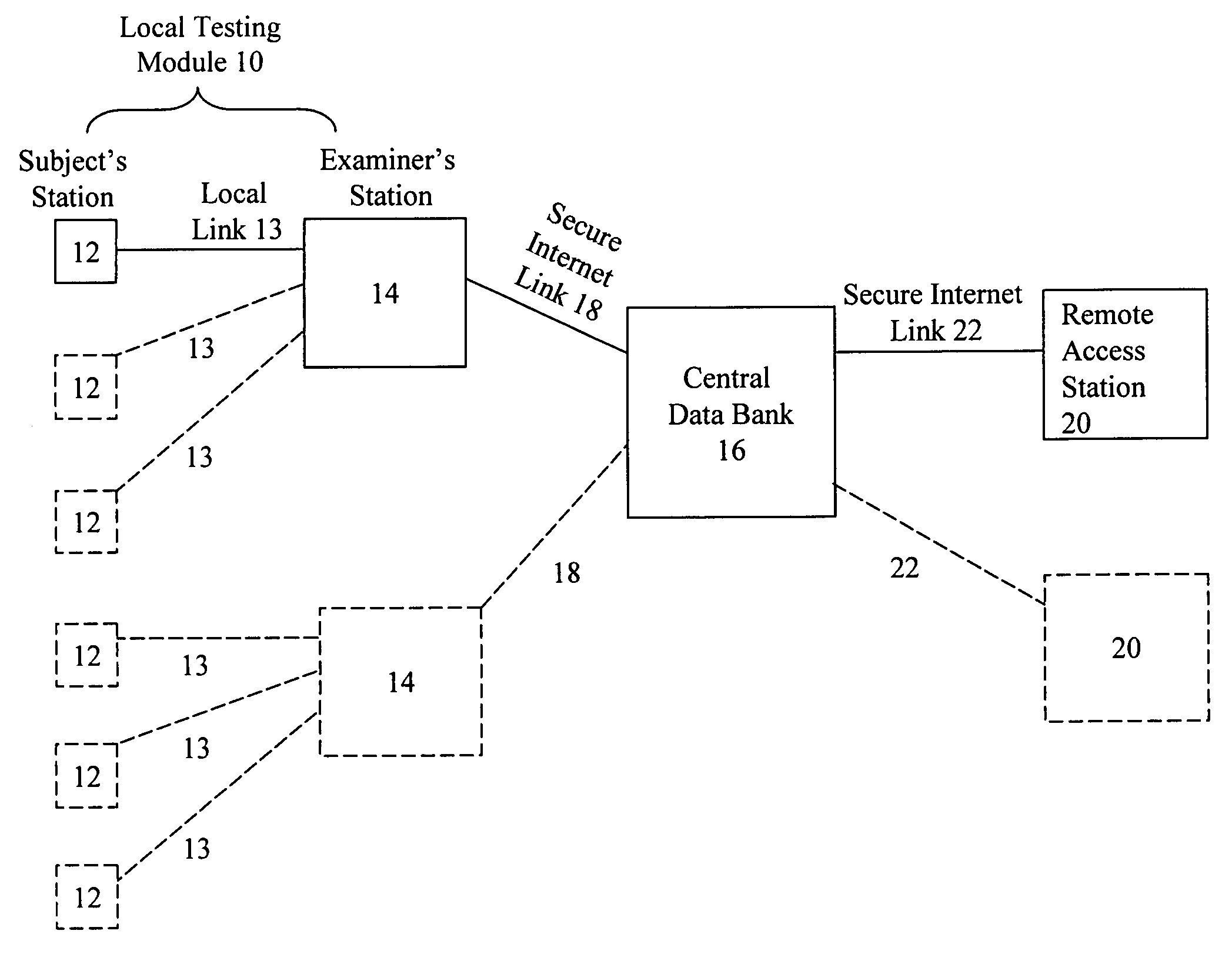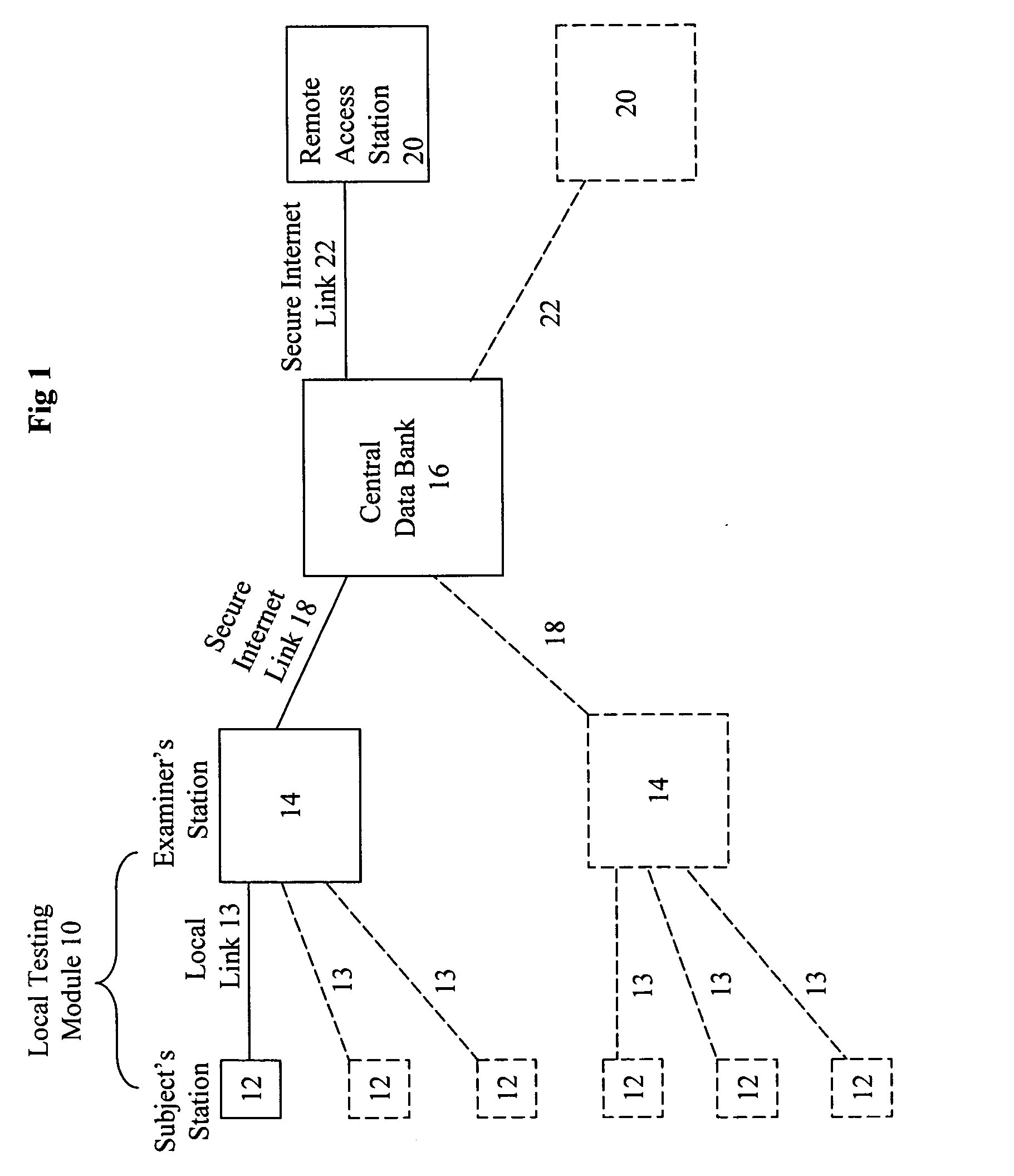Neuropsychological assessment platform (NPAP) and method
a neuropsychological assessment and platform technology, applied in the field of clinical neuropsychology and neuropsychological assessment, can solve the problems of limitation of testing efficiency, collection restrain scientific advancement, and the inability to perform neuropsychological assessment procedures, and achieve the effect of diverse and creative data analysis
- Summary
- Abstract
- Description
- Claims
- Application Information
AI Technical Summary
Benefits of technology
Problems solved by technology
Method used
Image
Examples
Embodiment Construction
[0045] It should be understood that the foregoing description is only illustrative of the invention. Various alternatives and modifications can be devised by those skilled in the art without departing from the invention. Accordingly, the present invention is intended to embrace all such alternatives, modifications and variances which fall within the scope of the appended claims.
[0046] Referring to FIG. 1, FIG. 2, FIG. 3, and FIG. 4 there is shown a diagrammatic view of the NPAP apparatus incorporating features of the present invention. Although the present invention will be described with reference to the single embodiment shown in the drawings, it should be understood that the present invention can be embodied in many alternate forms of embodiments. In addition, any suitable size, shape or type of elements or materials could be used.
[0047]FIG. 1 is a block diagram of the apparatus components and connectivity. The Local Testing Module 10 represents the portion of the computerized ...
PUM
 Login to View More
Login to View More Abstract
Description
Claims
Application Information
 Login to View More
Login to View More - R&D
- Intellectual Property
- Life Sciences
- Materials
- Tech Scout
- Unparalleled Data Quality
- Higher Quality Content
- 60% Fewer Hallucinations
Browse by: Latest US Patents, China's latest patents, Technical Efficacy Thesaurus, Application Domain, Technology Topic, Popular Technical Reports.
© 2025 PatSnap. All rights reserved.Legal|Privacy policy|Modern Slavery Act Transparency Statement|Sitemap|About US| Contact US: help@patsnap.com



